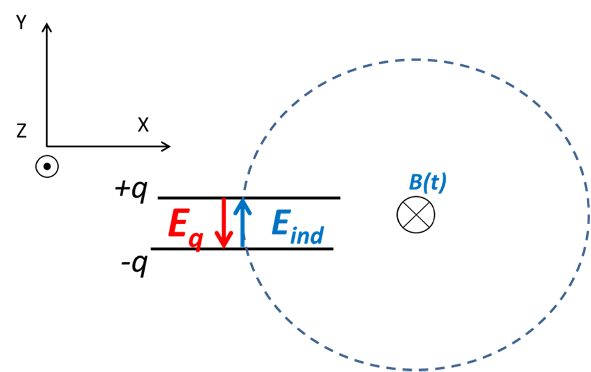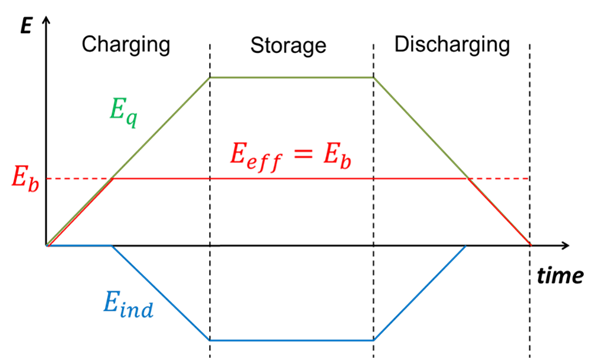Method And Apparatus For Increasing Energy Density In Electric Capacitors Using An Inductive Electric Field
Patent Status
| Country | Type | Number | Dated | Case |
| United States Of America | Issued Patent | 12,424,867 | 09/23/2025 | 2019-757 |
Full Description
Background:
Despite significant progress made in electric energy storage technology, there is a key problem that remains unsolved. The energy density, i.e., amount of energy stored per unit volume in electric capacitors is less than the one of gasoline - 34.2 MJ/L. Exceeding this limit with electric storage devices would drastically change the future of society and renewable energy storage.
Technology:
Prof. Aleksandr Khitun at UCR has developed a novel and revolutionary method for unlimited energy storage. The essence of the approach is the use of inductive voltage (Vind) to partially compensate for the electrostatic voltage q/C produced by the electric charges on capacitor plates. The theoretical considerations and rigorous computations indicate that is possible to increase the amount of charge stored on the plates before the breakdown and increase the energy stored in the capacitor using the compensational inductive voltage.

Schematics of a parallel-plate capacitor in a time-varying magnetic field B. The red and the blue arrows show the direction of the electrostatic 𝐸𝑞 and the inductive electric field 𝐸𝑖𝑛𝑑, respectively. The direction of the inductive field is chosen to compensate the electrostatic field.

Illustration of the principle of operation. The charging of the capacitor starts at zero inductive electric field 𝐸𝑖𝑛𝑑. As the electric field produced by charges 𝐸𝑞 approaches the breakdown value 𝐸𝑏, the source of magnetic field is turned on to provide the inductive electric field 𝐸𝑖𝑛𝑑. The inductive field 𝐸𝑖𝑛𝑑 is directed opposite to 𝐸𝑞 to compensate the charge-induced electric field. The charging is continued till some charge is stored on the plates. In the storage regime, the inductive field 𝐸𝑖𝑛𝑑 remains constant to keep the effective electric field below the breakdown. The discharging of the capacitor is synchronized with the change of the magnetic field rate. The effective magnetic field is kept close to 𝐸𝑏 till the last electron is discharged.
State Of Development
The proof-of-concept experiments demonstrating the electrostatic breakdown suppression by the compensational inductive field have been successfully demonstrated. The results confirm the main idea of the proposed approach The team is actively seeking potential partners to further the development and commercialization of the technology.
Related Materials
Inventions by Aleksandr Khitun
Please see all inventions by Prof. Alex Khitun at UCR
Contact
- Venkata S. Krishnamurty
- venkata.krishnamurty@ucr.edu
- tel: View Phone Number.
Other Information
Keywords
capacitors, energy storage, electric vehicle, charge storage, inductive field, energy density
